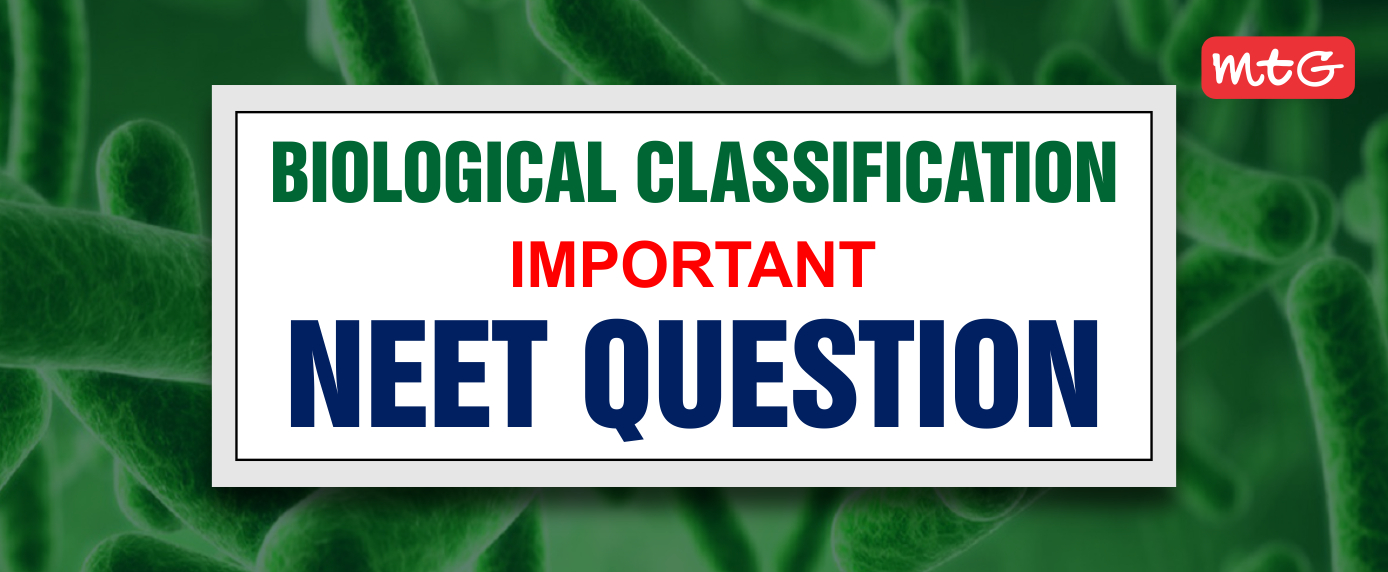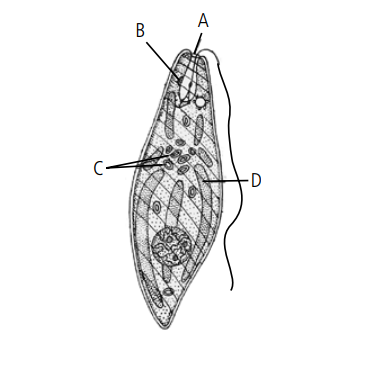
Many important questions are formed in competitive exams like NEET and boards from Class 11 Biology Chapter 2. In this chapter Biological Classification, you will get to practice various topics like Kingdom Monera, Kingdom Protista, Kingdom Fungi, Viruses, the Structure of Viruses, etc. Below, we have provided Important Questions PDFs from Class 11 Biology Chapter 2 Biological Classification for your NEET 2023 preparation. You can check it here or download it later for revision purposes.
Check out: The living world class 11 notes pdf
Biological Classification Class 11 NEET Questions and Answers
We’ve compiled a list of important questions about the biological classification biology class 11 chapter 2 that you should not miss while studying for exams like NEET.
Biological Classification MCQ for NEET
Q.1. How is cytotaxonomy different from cladistic taxonomy?
(a) Cytotaxonomy is based on number, structure and banding pattern of chromosomes while cladistic taxonomy is based on origin from common ancestor.
(b) In cytotaxonomy, lineage can be traced with the help of chromosome studies, while in cladistic taxonomy, relationships are known using DNA analysis and protein tests.
(c) Cladistic taxonomy helps to trace the evolution of humans from apes while cytotaxonomy produces cladogram.
(d) Cytotaxonomy is based on stable and specific chemical constituents while cladistic taxonomy searches similarity due to common phylogeny.
A.1. (a)
Q.2. How is a capsule advantageous to a bacterium?
(a) It protects the bacterium from desiccation.
(b) It provides means of locomotion.
(c) It allows bacterium to “hide” from host’s immune system.
(d) Both (a) and (c)
A.2. (d)
Q.3. The chief component of the bacterial cell wall is
(a) cellulose and chitin
(b) cellulose and pectin
(c) peptidoglycans
(d) cellulose and carbohydrates.
A.3. (c)
Q.4. Which of the following cell organelles is absent in mycoplasma?
(a) Endoplasmic reticulum
(b) Lysosomes
(c) Mitochondria
(d) All of these
A.4. (d)
Q.5. Dikaryon formation is characteristic of
(a) ascomycetes and basidiomycetes
(b) phycomycetes and basidiomycetes
(c) ascomycetes and phycomycetes
(d) phycomycetes and zygomycetes.
A.5. (a)
Biological Classification Match the Following Questions for NEET
Q.1. Match the column I with column II.
| Column I | Column II |
|---|---|
| A. Three kingdom classification | (i) Linnaeus |
| B. Five kingdom classification | (ii) Copeland |
| C. Two kingdom classification | (iii) Whittaker |
| D. Four kingdom classification | (iv) Haeckel |
| E. Six kingdom classification | (v) Carl Woese |
A.1. A-(iv), B-(iii), C-(i), D-(ii), E-(v)
Biological Classification Passage-Based Questions for NEET
Q.1. Complete the given passage with appropriate words or phrases.
Archaebacteria are most primitive prokaryotes and can live under extreme hostile conditions. They are of two broad categories; (i) live under anaerobic conditions only and get killed in the presence of oxygen, while (ii) are actually aerobic archaebacteria which can bear anaerobic conditions also. Archaebacteria are of three major types : (iii) occur in marshy areas and convert formic acid and carbon dioxide into methane. Archaebacteria found in salt rich substrata are called (iv) , they are able to tolerate high salt conditions due to absence of (v) and hence plasmolysis. Archaebacteria that have dual ability to tolerate high temperature and acidity are (vi) . Archaebacteria are also called (vii) . They are used for producing gobar gas from dung and sewage and also help in cellulose fermentation in (viii) .
A.1. (i) obligate anaerobes (ii) facultative anaerobes (iii) methanogens (iv) halophiles (v) sap vacuoles (vi) thermoacidophiles (vii) living fossils (viii) ruminants
Biological Classification Assertion and Reason Questions for NEET
In each of the following questions, a statement of Assertion (A) is given and a corresponding statement of Reason (R) is given just below it. Of the statements, mark the correct answer as :
(a) If both A and R are true and R is the correct explanation of A
(b) If both A and R are true but R is not the correct explanation of A
(c) If A is true but R is false (d) If both A and R are false.
Q.1. Assertion: Neurospora crassa is a widely used model organism in experimental genetics.
Reason: Neurospora crassa produces a large number of antibacterial and antifungal drugs.
A.1 (c)
Q.2. Assertion: Anabaena has the ability to fix atmospheric nitrogen.
Reason: Anabaena possess heterocysts.
A.2. (a)
Q.3. Assertion: Female bacterium develops sex pili for conjugating with male bacterium.
Reason: F-plasmids are present in female bacterium.
A,3. (d)
Biological Classification Figure-Based Questions for NEET
Q.1. Consider the given figure and answer the following questions.
(a) Identify A, B, C, and D in the given figure.
(b) What are the functions of A and B?
(c) What will happen if this organism is allowed to grow in dark?
A.1. (a) The given figure is of Euglena. Here, A is Cytostome, B is Stigma, C is Paramylum bodies and D is Chloroplast.
(b) The cytostome (A) is an eccentric mouth part at the apical end of the organism. It leads to a tubular canal, called cytopharynx which expands at the base to form a large rounded reservoir. At the end of the reservoir, the cytoplasm contains an orange red stigma or eye spot. It is photosensitive. It contains red pigment astaxanthin. Paraflagellar body and eye spot together help in directing the organism towards the optimum light.
(c) The nutrition in Euglena, is holophytic (photoautotrophic) or (saprobic). When it is allowed to grow in dark, the photosynthetic form can feed on organic remains. Such mode of nutrition is known as mixotrophic.
Biological Classification NEET Questions and Answers PDF






























